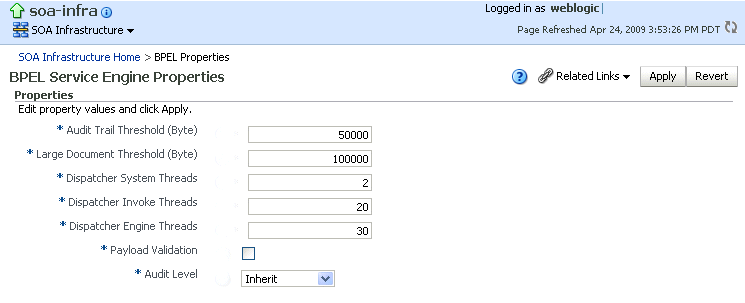9 Configuring BPEL Process Service Components and Engines
This chapter describes how to configure BPEL process service components and service engines.
This chapter includes the following topic:
9.1 Configuring BPEL Process Service Engine Properties
You can configure BPEL process service engine properties. The properties are used by the BPEL process service engine during processing of BPEL service components.
To configure BPEL process service engine properties:
-
Access this page through one of the following options:
From the SOA Infrastructure Menu... From the SOA Folder in the Navigator... - Select SOA Administration > BPEL Properties.
- Right-click soa-infra.
-
Select SOA Administration > BPEL Properties.
The BPEL Service Engine Properties page displays properties for setting audit trail and large document thresholds, setting dispatcher thread properties, validating payload schema, and setting the audit trail level.

Description of the illustration soaadmin_bpel_props.gif
-
Make changes to the service engine properties that are appropriate to your environment.
-
Click Apply.